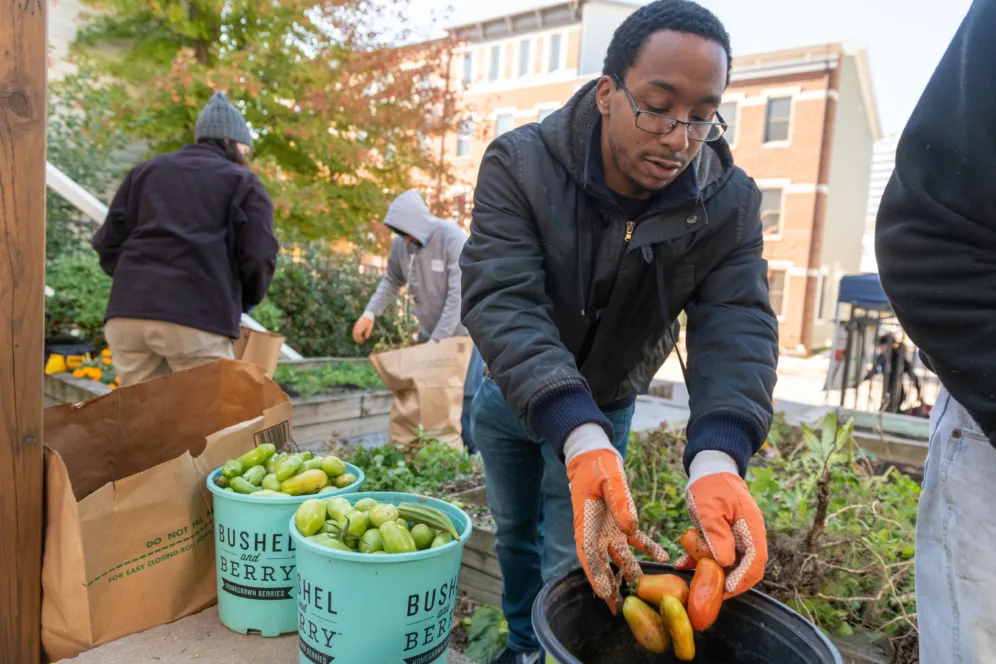Composting 101
If you've always wanted to compost, now is a great time to learn. It's easier than you may think to get smart about scraps—we'll show you how!
- Conservation
If you've always wanted to compost, now is a great time to learn. It's easier than you may think to get smart about scraps—we'll show you how!
Compost is created when organic material breaks down over time and turns into a soil-like substance. Any gardener will tell you the benefits of composting; the end-product is a rich, natural fertilizer that's excellent for growing plants and produce. But there's an even bigger benefit that helps the planet—did you know that composting also helps fight climate change?
According to the Environmental Protection Agency, food scraps and yard waste make up nearly 30% of what we throw away, which eventually ends up in landfills. There, these materials not only take up unnecessary space, but also break down and release methane, a greenhouse gas that fuels climate change. When you compost, you divert these materials from landfills while shrinking your personal carbon footprint.
Basic composting requires three ingredients:
Compostable items include the following: fruits and veggie scraps, eggshells, nutshells, coffee grounds and filters, tea bags, cardboard paper, grass and plant clippings, dry leaves, shredded newspaper and wood chips.
You cannot compost: dairy products (think butter, milk, sour cream) and eggs; fats, grease or oils; animal or fish bones and meat scraps. These materials can cause unwelcome odor and invite just-as-unwelcome pests.
Get your bin ready. If you're just getting started with composting, a large plastic bin, garbage can or similar container will do—just make sure that you drill holes in the top and bottom for aeration. Later down the line, you may want to invest in a store-bought compost bin, or a larger outdoor setup.
Select a dry, shady spot for your compost bin. Ideally, it'll be near a water source so that you can easily moisten your pile as needed.
Start off your compost by adding an equal amount of green materials and brown materials. Hint: Larger pieces of material should be chopped or shredded to speed up the composting process.
Periodically water your pile so that it's damp, but not soaking. Be careful not to overwater—if your compost is waterlogged, it may start to rot.
Continue to add your green materials and brown materials as you collect them. As your pile grows, bury additional fruit and vegetable waste under about 10 inches of the compost material to promote breakdown. Hint: Keep an eye on your compost, and adjust as needed. If it seems too wet and has an odor, add more brown materials or mix and aerate more often. Too dry? Try adding more green materials and water.
Mix your compost about once a week with a shovel or pitchfork to aerate, and cover the bin with a tarp or lid to hold in moisture.
When the material at the bottom of your bin is dark in color, it's ready to use as fertilizer for plants!
TIP: For convenience, keep a small compost bin in your kitchen for food scraps. When it's full, you can transfer the contents to your outdoor bin.
Is your outdoor space at a premium? No problem! You have a few options when it comes to indoor composting. Like an outdoor compost bin, there are plenty of options available for purchase. Or, you can make your own with an appropriately sized container! Just be sure to drills holes in the container to help with aeration.
If you don't have the room outdoors for a compost bin and aren't interested in maintaining an indoor version, you can still help to shrink your carbon footprint—simply save your kitchen scraps and freeze them. When you're ready, do some research. There may be local gardens and farms that will take your scraps; some farmers markets will also take them, and some areas offer options for compost pick-up services or facilities nearby where you can drop your scraps.
Another option for indoor composting, if you don't mind some wriggly friends in your home, is vermiculture—in other words, composting using worms.

